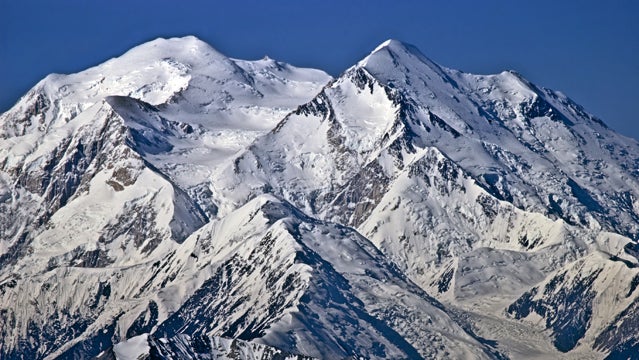A summit bid is on a lot of folks’ minds this season: June 7 marks the hundredth anniversary of the first ascent. But the highest mountain in North America is not the best spot for beginners.
“We wouldn’t want to discourage anyone,” says Tim Page, the program coordinator at the American Alpine Institute, one of a handful of outfits approved to guide on the mountain. “But the minimum requirements we ask for are that people have been on a glacier and have training with glacier rescue and glacier travel. So that means they have skills like doing self-arrest, using crampons and doing crevasse rescue.”
Experience with altitude is also important. Washington’s is often viewed as a practice ground for Denali, and Page says they look for climbers who’ve at least gotten close to 14,000 feet. “Ideally, what’s better, is if people have been to other locations in the Himalaya or Alaska, getting up to 20,000 feet.” It’s a matter of understanding ahead of time how your body will react, of being able to sense whether you’re experiencing the ordinary symptoms of being at high altitude or sliding into a danger zone. “We want people to be familiar with that feeling, so when they get on Denali and they’re secluded and dealing with those conditions, they’re not also scared because their body’s not working.”
If you’re experienced enough, it’s possible to climb Denali without a guide. For independent climbers, the National Park Service recommends “numerous ascents” of high peaks in Alaska, the Cascades, the Alps or the Himalaya. In addition to glacier experience, climbers should be familiar with the dynamics of longer-term expeditions: A Denali excursion can take three or four weeks. There’s a major logistical component too, since teams are entirely responsible for moving their own gear and supplies up the mountain. Last, but certainly not least, is the cold. “Experience with winter camping in arctic type conditions is extremely valuable and should be considered mandatory,” per the NPS.
As far as fitness goes, the Park Service suggests training with a 40 to 70 pound pack and a 60 to 80 pound sled, for 6 to 8 hours at a shot. You’ll want to have good endurance as well.
Still game? There are a few last-minute openings in guided groups this centennial season.


